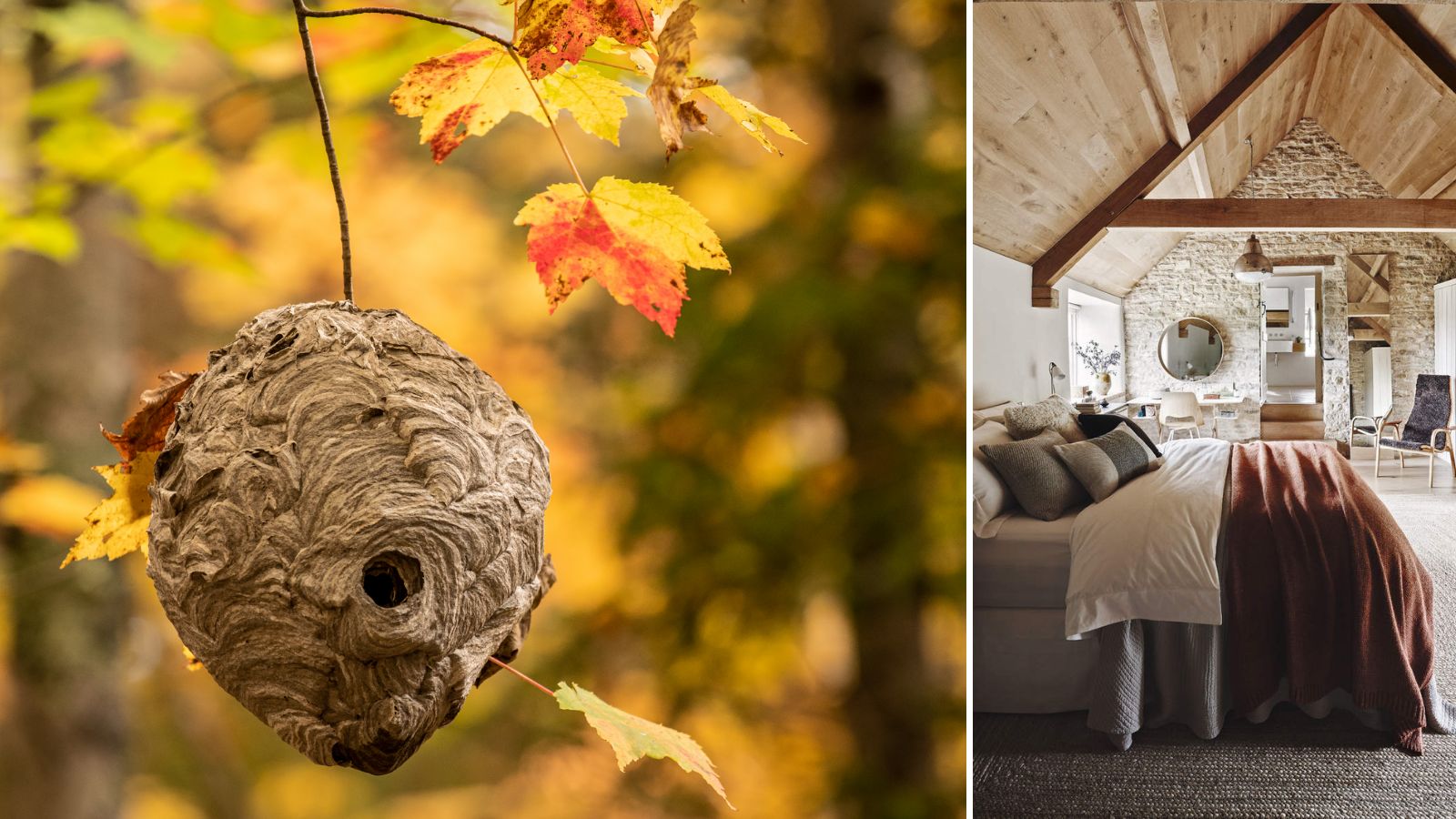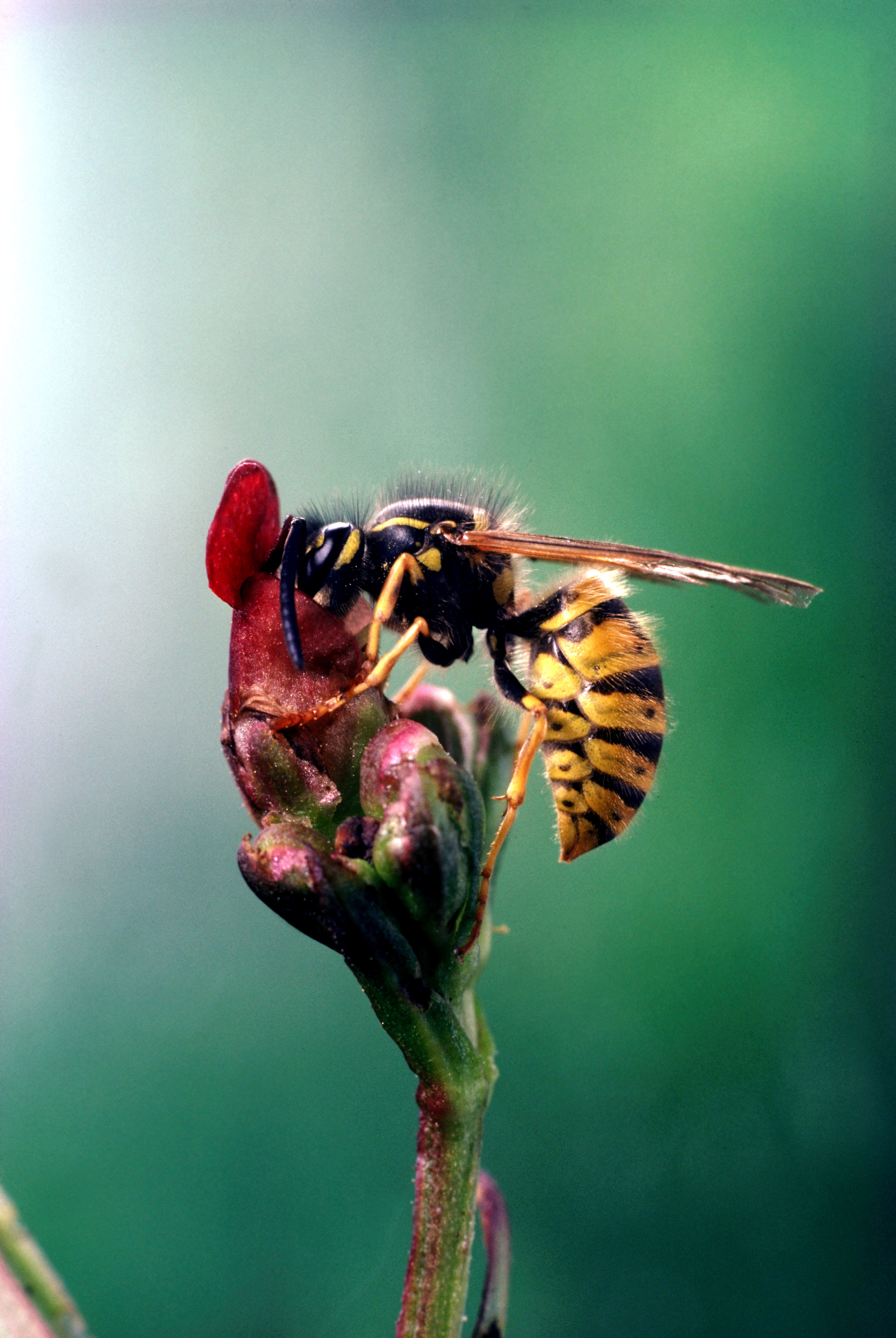How to get rid of hornets in your home – humane and safe ways to deter these pests
Defensive of their nests and with a painful sting, a colony of hornets aren’t creatures you want to share a house with. We look at ways to remove them safely and keep them out


Hornets can often get bad press. The Asian giant hornet, for instance, was dubbed ‘the murder hornet’ when it arrived in the US in 2019; its infamous nickname earned because it could lay waste to honeybee colonies.
It will be much like getting rid of wasps, but hornets are larger in size, some species reaching more than two inches in length. Though they are usually less aggressive, unless provoked or their nest is threatened, the venom in their sting is more painful – and they can sting repeatedly.
So despite their value as pollinators, and as the gardener’s friend, because hornets prey on insects that feed on plants, they're not necessarily welcome house guests.
How to get rid of hornets
If you have compared hornets vs. wasps and discovered what you believe to be a nest of hornets in your home, we have expert advice on how to correctly identify it and how to remove it safely.

What are the most common hornets in the US?
‘The most common hornet species in the US are the European hornet (Vespa crabro) and the bald-faced hornet (Dolichovespula maculata), which is actually a type of yellowjacket,’ says entomologist Trenton Frazer. ‘European hornets are larger, reaching up to 1.5 inches in length, with a reddish-brown and yellow striped abdomen. Bald-faced hornets are slightly smaller and have a distinctive black and white pattern.’
The threat that the Asian giant hornet (Vespa mandarinia) posed to honeybees, which it killed by decapitation, led to a successful campaign to eradicate them in the US. There hasn’t been a sighting here since 2022.

Holding a master’s degree in entomology from the University of Florida, Trenton has worked in the pest control industry for 20 years. He has worked with Aptive Environmental since its beginning, providing effective pest control solutions and educating the public on pest prevention and management.
Where do hornets build their nests?
In the yard, the hornets will look for a sheltered location, such as trees or bushes or the overhang of an outbuilding. Indoors. they like hollow walls, roof eaves, attics or chimneys. The nest will usually be well above the soil, unlike some wasps that make their home in the ground. Hornets nests are an impressive piece of natural engineering, made by them chewing wood pulp to mix it with saliva and create a building material similar to paper-mâché. The Queen hornet starts the build, and it is completed by worker hornets who source their materials by stripping the bark from trees and branches. They are rounded or teardrop-shaped and the size of a soccer ball or even bigger.
Design expertise in your inbox – from inspiring decorating ideas and beautiful celebrity homes to practical gardening advice and shopping round-ups.
At the centre is a honeycomb surrounded by a strong protective shell with a wave-like pattern to it, and a single entrance at the bottom of the nest. It is naturally biodegradable and will disintegrate in the wind and rain of winter, after the colony has died.
How dangerous are they?
‘When threatened, hornets can become aggressive and deliver painful stings, which may cause allergic reactions in some individuals (triggered by a histamine the venom contains),’ says Trenton. ‘Multiple stings can be particularly dangerous.
‘However, hornets also play a beneficial role in the ecosystem by preying on other insects which can be damaging to plants, vegetation, and gardens.’
Unlike bees, hornets don’t have barbed stingers, so their stingers don’t get embedded in the skin – which means they can sting a person several times.
According to the CDC (Centers for Disease Control and Prevention), 72 people die on average each year due to hornet, wasp, or bee stings, the majority of them men.
How can you safely get rid of hornets?
Hornets will aggressively defend their nests so their removal has to be done carefully, and protective clothing is a must.
‘At a minimum, wear a thick, long-sleeved shirt, pants, thick leather or rubber gloves, and boots,’ says Scott McCombe, a pest control specialist. ‘Coveralls can add extra protection, and a beekeeper's veil can protect your head and face.’
For head to ankle coverage, try a beekeeper’s suit with built in mesh hood and gloves like this one from Amazon.
In the early spring, the nest might be the size of a table tennis ball, as it only contains the queen and eggs, and this can be washed away with a hose.
Large nests can be dealt with using an insecticide designed for hornets or wasps, such as EcoSMART Organic Hornet Killer from Amazon (we like this product because it's made from 100% organic insecticide and is completely safe to use around children and pets.) Hornets like to make their homes high up, so if you don't opt for this spray, you should look for an insecticide that can shoot a solid stream up to at least 15ft.
‘Treat the nest with insecticide at night,’ advizes Scott. ‘The best time is around two hours after dusk as most of the workers will have returned to it. Use a flashlight with a red filter, such as a sheet of red cellophane secured with a rubber band, to find the nest. Hornets have trouble seeing red light, so you'll be able to see where you're going without disturbing them.’
If there are still signs of hornet life after a few days, re-treat with the insecticide. When there is no evidence of activity, remove it and seal it in an extra heavy-duty trash bag.

Scott heads up the award-winning Summit Environmental Solutions (SES), a family-owned local pest solutions, animal control, and home insulation company based in Northern Virginia.
Humane ways to get rid of hornets
Of course, you don't always have to reach for insecticides to keep hornets away from your home. One humane method to get rid of hornets is by using decoy nests. Hornets are highly territorial and will avoid building a nest within a certain radius of another one.
By placing a decoy nest, which can be purchased from Amazon or made from common materials, you can trick the hornets into thinking the area is already claimed. This discourages them from setting up their own nest nearby. It's an effective, non-lethal way to keep hornets at bay without harming them or disrupting the ecosystem.
Certain plants like mint, citronella, and eucalyptus can also act as natural hornet deterrents. Planting these around your home can help keep hornets away.
How do you stop hornets coming back?
‘In the late winter or early spring, survey your home and any other structures on your property, such as sheds,’ recommends Scott. ‘Check for cracks in the siding, roof line, eaves, and soffits, and seal any openings you find with waterproof caulk.
‘Also, eliminate sources of food and water,’ he adds. ‘Avoid leaving out food or containers that held food, especially meat and other sources of protein, fruit, and sugary drinks. Ensure hoses and other water fixtures don't leak, and promptly remove any puddles of water that collect in your yard.’
If you don't want to be bugged by insects while you are relaxing on your porch or patio, surround yourself with bright blooms, herbs and grasses that will keep them away. Read our guide to the top ten plants that the critters hate.

Alison is a contributing gardens writer for Homes & Gardens, writing on a range of topics from plant care to garden design. She has recently landscaped the outside space of her Victorian home, replacing crazy paving and cracked slabs with new lawn, and is currently cultivating a fruit bed.